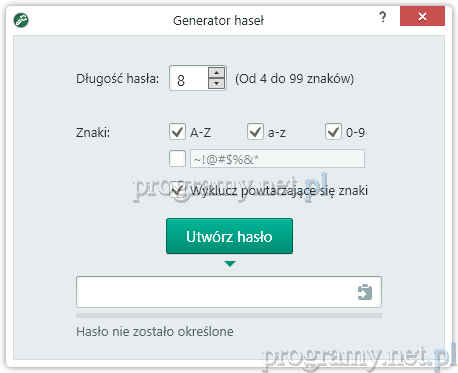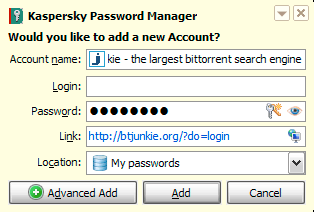
- #Kaspersky password manager fixes that generated generator
- #Kaspersky password manager fixes that generated update
- #Kaspersky password manager fixes that generated Patch
- #Kaspersky password manager fixes that generated for android
Find more information about adding widgets on the Apple support website. To quickly generate passwords and copy them to the clipboard, you can also use the Passwords widget on your device's home screen.
#Kaspersky password manager fixes that generated generator
When you close the Password Generator window, the app saves the selected password parameters until the vault is unlocked. You can manually paste the password into the required field. LastPass Features: Creates strong passwords Stores unlimited passwords Automatically fills out forms for you, thereby saving time Manages your data from multiple computers seamlessly Supports. The app copies the generated password to the clipboard. Tap to generate a password again using the selected parameters. If the strength of the generated password is medium or low, Kaspersky Password Manager notifies you below the password. The app automatically generates a new password when the parameters are changed. You can add or delete special characters used during password generation in the field below the toggle switch.

By default, this toggle switch is turned on. Turn on/off Special Characters to use/not use special characters during password generation.


#Kaspersky password manager fixes that generated for android
#Kaspersky password manager fixes that generated Patch
Kaspersky Password Manager for Windows 9.0.2 Patch F.
#Kaspersky password manager fixes that generated update
In this case, update your software and generate new ones. Ledger Donjon, the security research team at Ledger, claims it took Kaspersky almost two years to patch the vulnerability, which was first flagged in 2019. If you have generated any passwords on KPM versions prior to those shown below, consider them easily crackable. In April 2021, Kaspersky published an advisory, and in May, technical information for the vulnerability was published.

However, that fix wasn’t completely free of defects, so it took another year to address the problem properly on all platforms, assign a CVE code (CVE-2020-27020), and alert users that they need to re-generate their passwords. All of that was discovered and reported to Kaspersky back in June 2019, and the security company pushed the first fix in October of that year.


 0 kommentar(er)
0 kommentar(er)
